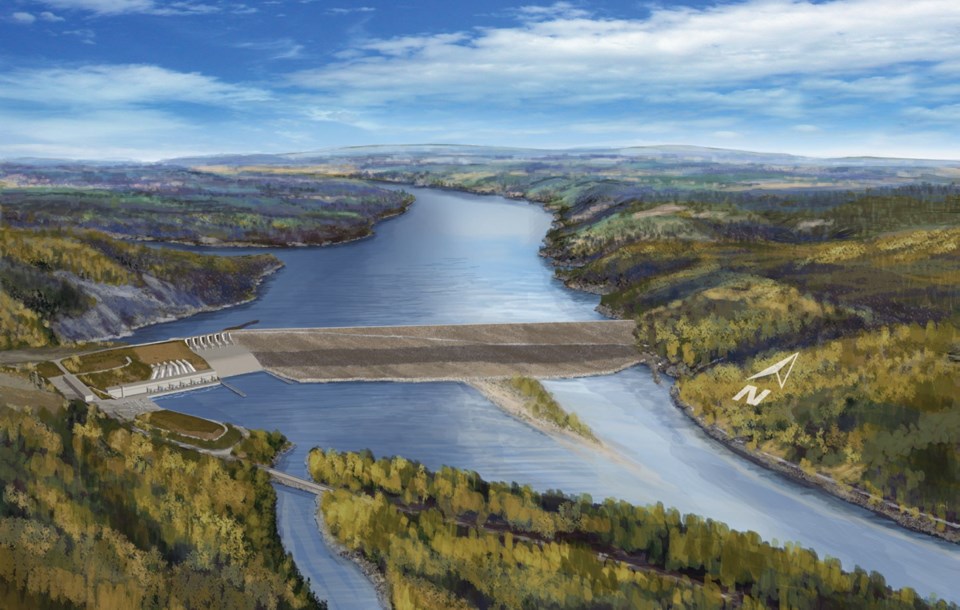 Premier Christy Clark stepped in to order a change to B.C. Hydro’s new labour model for building the $9-billion Site C dam after the building-trades unions objected, but the trades council wants a few more edits before they call off their lawyers.
Premier Christy Clark stepped in to order a change to B.C. Hydro’s new labour model for building the $9-billion Site C dam after the building-trades unions objected, but the trades council wants a few more edits before they call off their lawyers.
Organized trades managed a clear win last month when they filed suit and went public with a beef about Hydro’s labour model. Standard practice in the past had been to sign a project labour agreement where all workers on site were more or less on the same page in terms of wages and benefits.
The dam on the Peace River is to be built as a series of separate projects, run as a managed open site. Union and non-union contractors can bid and work side by side.
The new model included a specific prohibition against union organizing at the work site. The council called it a violation of their constitutional rights and filed suit.
Clark backed them and overruled Hydro, ordering the utility to drop the offending clause.
“I think B.C. Hydro took this a step too far when they said they can’t organize on site,” she said.
(I thought at the time that would be the end of the argument. Wrong again.)
Meetings and an exchange of letters this week show the building trades are still unhappy with the managed open-site plan, and have no plans to drop their lawsuit.
Tom Sigurdson, executive director of the B.C.-Yukon Building Trades Council, wrote to Clark suggesting a different approach — a construction partnership agreement. It would include standardized wages, no reduced wages for foreign workers and a 10-year guarantee of labour certainty.
The letter came fresh off a meeting with Hydro brass about which Sigurdson said he was “disappointed and puzzled.” Hydro is being inflexible about the labour model and its preferred way of doing things will inject serious risk into the project, he said.
“Unfortunately, B.C. Hydro has also not satisfied our concerns — or yours, as we understand them to be — that the site conditions they are proposing violate the Charter of Rights.”
The crux of the complaint this time around seems to involve the issue of raiding — when unions solicit other workers on a job to leave another union and join theirs. After a year of haggling about the model, it’s still on the list of things Hydro wants prohibited on the dam site.
It’s a touchy subject in the labour world, but Sigurdson said this week: “The point of the union movement is to bring workers into the union.”
He said the dam will be a chaotic work site with people comparing differing paycheques for the same work.
His earlier pitch prompted Clark to order a course change and drop the organizing ban. But this week, she appears to be holding firm.
She replied by noting she had dealt with his previous complaint, but Site C has to provide the best deal for ratepayers and allow for competition between contractors on wages.
Clark said Hydro has offered a process where the council would be an active partner in the project and have preference over any temporary foreign workers.
“The process proposed by B.C. Hydro, which I support, provides a way for the BCYT and Hydro to work in partnership to ensure the maximum amount of jobs for British Columbians,” she said.
“I urge you to continue discussions with Hydro to explore any ideas to optimize the managed open-site model, while securing the best possible deal for ratepayers.”
Sigurdson remains disappointed. He said the managed open site won’t guarantee British Columbians jobs and his council is the only outfit with the ability to supply the needed workers and unify them.
That’s disputed by independent contractors, who say the old model is from a bygone age.
The wild card in the argument is what the labour market will look like over the duration.
If a few LNG plants and other projects take shape, the labour shortage will put big pressure on everyone involved. If Site C turns out to be the only mega-project in the works over the medium term, labour costs could stay constant and it will be an employers’ market.



